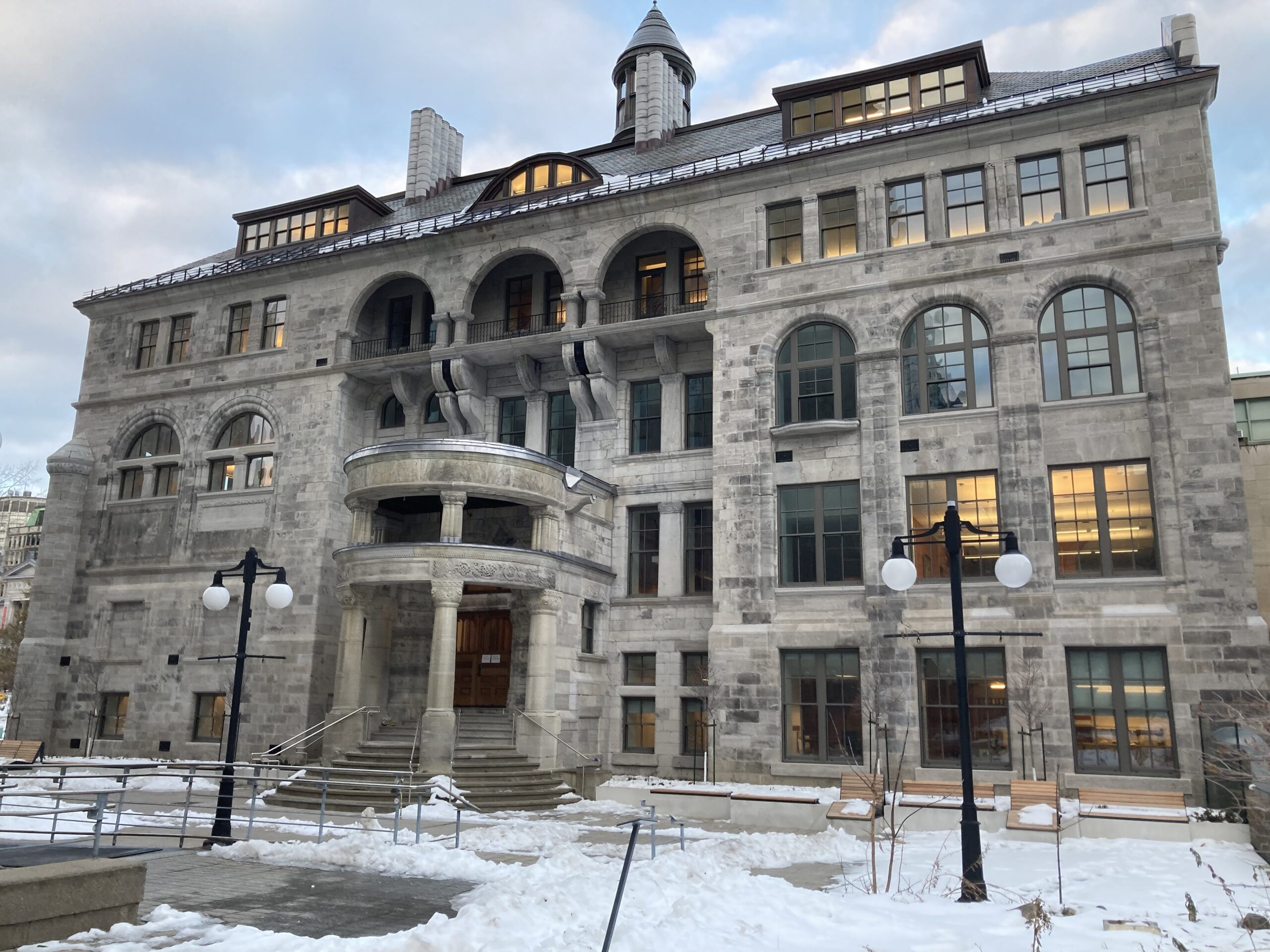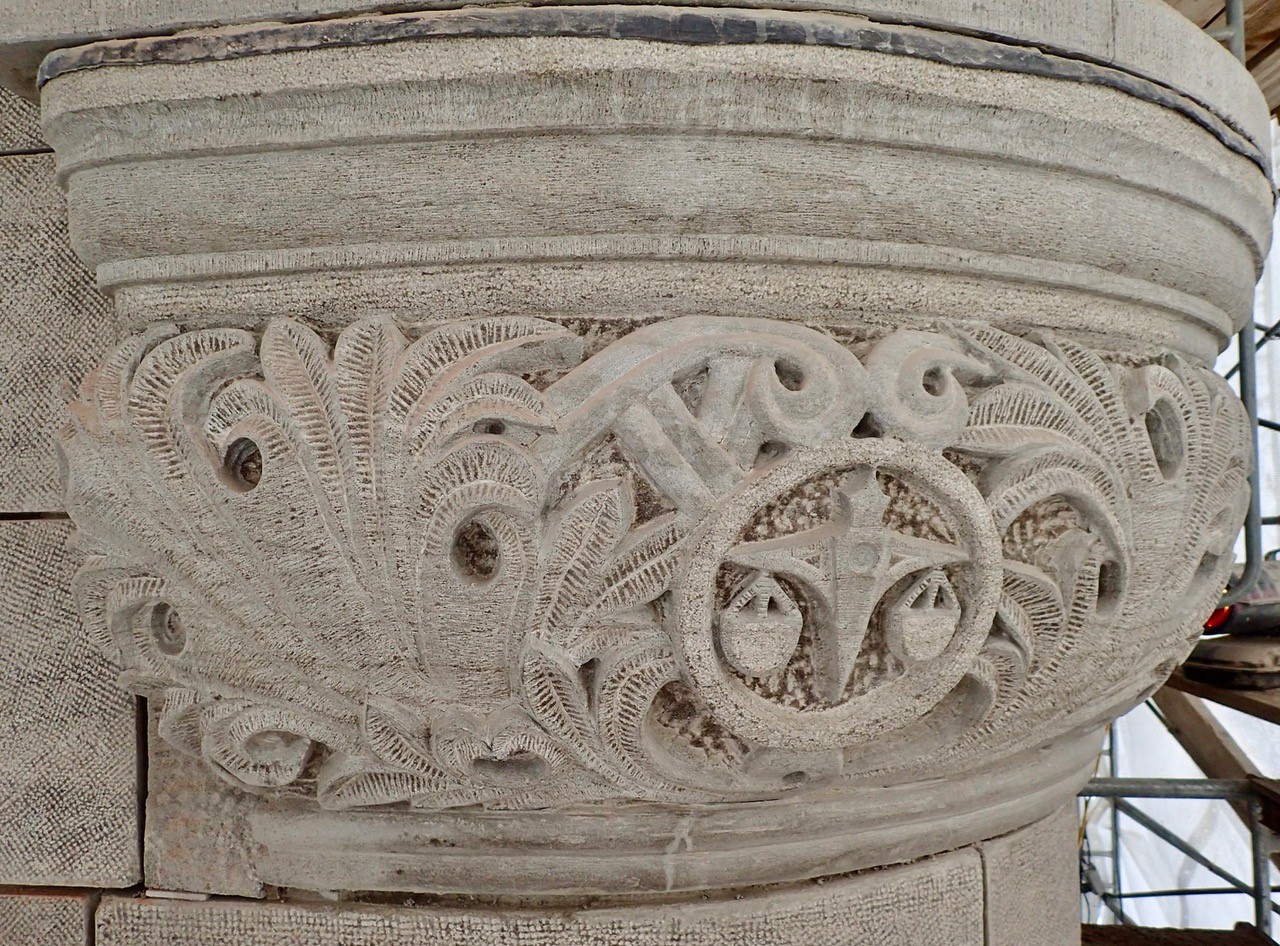
The Macdonald Stewart Library Building, home to the Schulich Library of Physical Sciences, Life Sciences, and Engineering, is one of several heritage buildings which together give McGill’s downtown campus its signature image. Built between 1891 and 1893, it was designed by Sir Andrew Thomas Taylor in the Richardsonian Romanesque style, of which some typical characteristics are the rounded arches and the heavy stone masonry.
Its recent renovation, a $31.8-million project that spanned three years, provides valuable insight into the many challenges that come with caring for aging buildings while striving to provide modern and comfortable spaces that serve McGill’s mission.
The renovation was aimed at preserving the building’s heritage character and improving its structural integrity and energy efficiency while increasing student seating capacity and improving the overall study environment.
The core of the project consisted of repairing and upgrading the building envelope, including the deteriorating façades. Sections of the façades had in fact been covered up for many years to prevent stones from falling. “We had to add structural reinforcements to the building to improve its seismic resistance, solidify the building, and secure the façade,” explains Johanne Guertin, a project manager at the firm GPH, hired by Facilities Management and Ancillary Services.
The interior portion of the walls is made up of a brick layer covered with drywall. To improve the energy efficiency of the building, an air-barrier membrane was sprayed onto the brick, which first had to be thoroughly cleaned. This meant having to remove the drywall layer. “And as this affected the ceilings and floors, we had to redo those as well,” Guertin adds.
Restoring a heritage building
Three of the four façades date back to the construction of the building. Only the one where the Frank Dawson Adams (FDA) Building is located has been modified to connect the two buildings. Great care went into the restoration of the original Montreal grey limestone façades. The architect team estimates they were able to save about two thirds of the original stones, with repairs or anchors.
“We try to keep the original materials as much as possible. If we think the stones can last another 50 years or so, we will keep them. If not, we replace them with a stone whose characteristics are very similar to that of the original,” says architect Matteo Cendamo, an associate at the firm EVOQ who has worked on several McGill buildings. The stone used here is the same that was used at the Macdonald-Harrington and Macdonald Engineering buildings, which recently underwent similar work.
Intricate work
The Macdonald-Stewart Library Building is adorned with 202 ornamental and sculptural masonry elements. Many needed to be repaired – intricate work for which a masonry conservator was hired. Some were consolidated to keep pieces from detaching themselves. This was done by drilling tiny holes in them, inserting stainless-steel rods and filling the holes with repair mortar. Approximately 28 of the sculpted elements were too damaged and had to be replaced. A carver mason reproduced them using a laser scan of the original and a computer-controlled cutting machine (sort of like reverse 3D printing), finishing each piece by hand.

Many of the sculpted elements are found on the column capitals and massive curved stones of the original entrance rotunda, on the south side, and around the entrance archway. That’s also where many broken stones had been covered up with a protective mesh. With the rehabilitation completed the majestic entrance can once again be admired by McGillians and visitors.
Finally, another important heritage element that was part of the project scope were the building’s windows. The original windows had been replaced in 1980. Apart from exhibiting serious operability and thermal issues, the newer windows did not have the same vertical dividers as the original ones and thus altered the building’s general appearance significantly. In addition to having a better energy efficiency rating, the windows installed as part of this project restore the original look of the building. “They reflect the era and style in which the building was constructed,” says Guertin. “This is a big plus.”
The scope of work also encompassed adding and renovating washrooms, installing a sprinkler system, replacing the heating, ventilation and air-conditioning (HVAC) and electrical systems, waterproofing the foundation, and redesigning the sunken north courtyard (between the Macdonald-Harrington, FDA and Schulich Library buildings), among other elements.
FMAS collaborators on this project included: Arkéos, Axino, Bouthillette Parizeau, Bureau d’études spécialisées, Englobe, EVOQ Architecture, GPH, Nadeau Foresterie Urbaine, WAA.
About the Macdonald-Stewart Library Building
Originally named the Macdonald Physics Building, it was considered to be one of the finest laboratory buildings in the world at the time it was built. The building was the site of experiments by Ernest Rutherford and Frederick Soddy who, between 1898 and 1907, performed ground-breaking work that would eventually earn them the Nobel Prize in Chemistry, Rutherford in 1908 and Soddy in 1921. The Department of Physics would eventually run out of space and require more modern laboratories, leading to the construction of the Ernest Rutherford Physics Building in 1977. The Macdonald-Stewart Building was renovated in 1982 to become the new home of what is now the Schulich Library of Physical Sciences, Life Sciences and Engineering.
